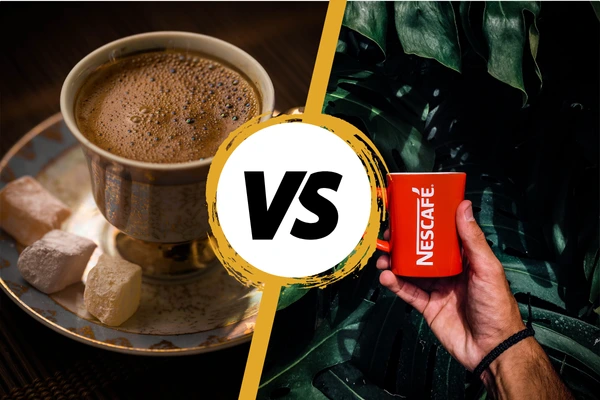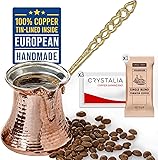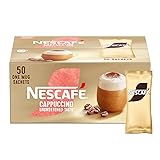Is there really a difference between a coffee that asks for patience and one that was designed to be made in seconds? Can something that comes in a jar ever stand toe to toe with a brew perfected over centuries? That’s the story of Turkish coffee vs Nescafé. On one side, you have a drink steeped in history, ritual, and craft. On the other, a quick fix promising caffeine on demand. The question is simple: can instant flavors ever compete with tradition?
Disclaimer: This post may contain affiliate links. If you click and make a purchase, we may earn a small commission at no extra cost to you.
Everything You Should Know About Turkish Coffee
Turkish coffee is unlike any other brew. It is prepared and served unfiltered, and it uses an ultra-fine grind of 100% Arabica beans. This method isn’t new or trendy. It is one of the oldest coffee traditions in the world.
Its roots stretch across centuries and cultures, especially throughout the Middle East and the Balkans, where it has been more than just a drink. It is a social ritual, a symbol of hospitality, and in many places, a daily ceremony that connects people to their heritage.
Want to see how American coffee compares to Turkish coffee? Take a look at the detailed breakdown to see why, even if one drink feels stronger, it actually contains less caffeine.
What is Nescafé?
Nescafé is a brand, not a type of coffee. It was one of the pioneers in making instant coffee accessible worldwide, and because of its massive popularity, people often use the word “Nescafé” as if it means instant coffee itself.
That’s where confusion begins. Nescafé is simply one label in a much bigger category, but it has become so dominant that many forget it is just a brand name.
How Instant Coffee is Made?
Instant coffee is created by brewing regular coffee in industrial batches, then removing the water to leave behind concentrated coffee solids. There are two main methods to achieve this:
- Spray drying: The brewed coffee is sprayed into hot air, causing the water to evaporate quickly and leaving behind fine coffee powder.
- Freeze drying: The coffee is frozen into chunks, then placed under vacuum conditions so the ice sublimates, preserving more of the coffee’s aroma and flavor.
Once rehydrated with hot water, those powders or granules transform back into a drink.
Preparation Differences Between Turkish Coffee and Nescafe
One requires time and attention, while the other is all about speed and simplicity.
Turkish Coffee
- Uses ultra-finely ground beans, water, and sugar if desired.
- Brewed in a small pot called a cezve.
- Slowly heated until foam forms, removed before boiling.
- Served unfiltered, with grounds settling at the bottom.
- Rich, thick texture with a signature layer of foam.
So preparing Turkish coffee is also simple. All you need is a pot and good coffee.
Nescafé (Instant Coffee)
- Scoop granules or powder into a cup.
- Add hot water and stir.
- No special equipment or technique needed.
- Ready in seconds.
- Light, straightforward taste designed for convenience.
Instant coffee is much easier to prepare. All you need is something to heat the water and your favorite instant coffee.
Want to know more? See what makes Turkish coffee distinctive among brewing methods.
Caffeine in Turkish Coffee vs Nescafe
Nescafé has more caffeine per serving than Turkish coffee.
Nescafé can have anywhere from 50 to 90 mg of caffeine, depending on the type and how much you scoop into your cup.
On the other hand, a typical serving of Turkish coffee contains around 50 to 65 mg of caffeine.
Turkish Coffee vs Nescafé – Which One Tastes Better?
In my opinion, Turkish coffee tastes much better than Nescafé or any other instant coffee. The depth of flavor, the thick texture, and the signature foam on top create an experience that instant coffee simply cannot match.
Especially when you brew it with freshly ground beans. The richness only gets stronger, and every sip feels like it carries a piece of history.
Instant coffee like Nescafé has its place. It is quick, convenient, and for many people it fits neatly into a busy daily routine. But for me, Turkish coffee always wins.
Key Takeaways on Turkish Coffee vs Nescafé
Turkish coffee and Nescafé may both deliver caffeine, but they represent two very different worlds. One is tradition carried through centuries, the other is convenience packaged for speed. Here’s the quick breakdown:
- Turkish coffee is unfiltered, made with ultra-finely ground Arabica beans, and deeply rooted in history and culture.
- Nescafé is a brand, often mistaken as the definition of instant coffee, but it’s just one label in a larger category.
- Instant coffee is made by brewing large batches, then spray drying or freeze drying to create powder or granules.
- Caffeine content is similar, though Nescafé can range a bit higher per serving (50-90 mg) compared to Turkish coffee (50-65 mg).
- Flavor is where Turkish coffee shines, offering richness, texture, and foam that instant coffee can’t replicate.
- Preparation sets them apart: Turkish coffee is a slow ritual, while Nescafé is ready in seconds.
FAQ
Is Nescafé the same as instant coffee?
Not exactly. Nescafé is a brand of instant coffee, but because of its worldwide popularity, many people use the name as if it means instant coffee itself. Instant coffee can come from many brands, with different blends and processes, while Nescafé is just one of the most recognized labels.
Does Turkish coffee taste stronger than instant coffee?
Yes, Turkish coffee usually tastes stronger and richer. It is unfiltered, which means more of the coffee’s natural oils and fine grounds stay in the cup.
Which is better for daily drinking, Turkish coffee or instant coffee?
That depends on what you value more. If you want a quick, no-fuss option, instant coffee like Nescafé is hard to beat. But if you enjoy taking time to prepare your cup and savoring deep, layered flavors, Turkish coffee is the better choice. Many people enjoy instant coffee for busy mornings and save Turkish coffee for moments when they want the full ritual and experience.







